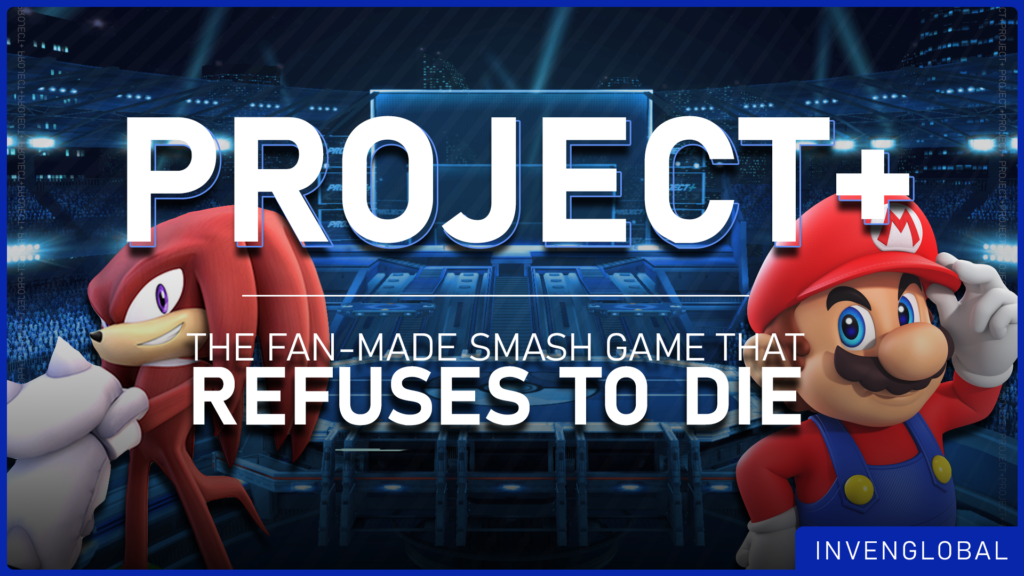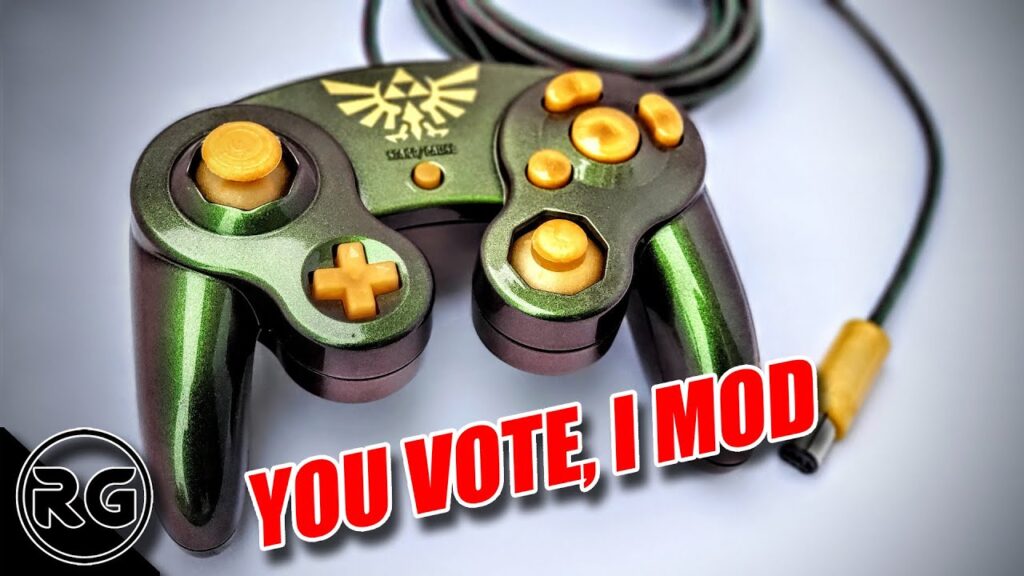
Despite the ubiquity of the remarkable and diverse Retro gaming market, the category of “Retro gaming” Isn’t even considered a term worth discussing amongst reputable Gaming Industry leader’s investment theses. Investment terms for promising gaming industries like VR gaming, Social gaming platforms, and generative AI gaming get their well deserved time in the spotlight. However, an absolutely massive category is strangely missing; Retro gaming. I believe this should change, as I think Retro gaming is not only a massively underserved category in terms of Venture Capital (VC) investment, it is a growing, diverse, and lucrative market that is home to some of the world’s top technical talent, some of the most dedicated and loyal customers, and incredibly passionate communities.
I believe this discrepancy is a result of the Retro gaming communities and the VC, startup, and investment communities existing in different information bubbles with extremely little overlap and outreach from either side. My goal is to attempt to bridge this gap by introducing the exciting and expansive world of Retro gaming markets and communities to investors, and highlight the incredible potential of this massive yet ignored market segment.
Since the term “Retro gaming” isn’t yet widely recognized among the investment community, I will attempt to give my own definition:
My definition of Retro gaming
“The Retro gaming industry is characterized by products and services which seek to recreate, enhance, and reimagine classic and nostalgic gaming experiences.”
My personal definition of the Retro gaming industry
Under this definition, there is an incredible breadth and depth of this industry, which spans many verticals:
The major categories of Retro gaming
- Retro gaming software
- Ported retro games
- ROM hacks, game mods and spinoffs
- Game engines
- Retro console software emulators
- Retro gaming consoles
- Refurbished Original Equipment Manufacturer (OEM) consoles from established and legacy game console companies
- Modded OEM consoles
- Portablized consoles
- Retro gaming emulation devices
- Retro gaming controllers
- Refurbished OEM controllers
- Modded OEM controllers
- Recreated+Reimagined controllers
- Enhanced controller components
- Retro gaming merchandising
- Handmade crafts
- Mass manufactured merchandise
- Collectibles
- Retro gaming events and eSports
- In-person tournaments and conventions
- Online tournaments
- Tournament bracket running websites
Every single one of these categories deserves several dedicated blog posts, due to the storied history, fierce fights for market dominance, and wildly passionate communities behind every one of these sub-categories as well as many others I didn’t even list. I genuinely believe there is a VC-backable, $100 million dollar to $1 billion dollar market opportunity in every single one of these major categories, ripe to be explored by passionate and hungry founders born from these communities, who understand the market and technology to an extraordinary degree. I think these incredible and talented founders, who are completely disconnected from the investment community, just need a little funding and help to get started and truly redefine their category within Retro gaming. This belief is based on my personal opinion and perspective as a long time member of the Retro gaming community and industry.
For each one of these categories and subcategories, there is significant demonstrated demand and engagement. The following examples are not to convince any investor fully on the idea that these areas will be immediately able to generate massive returns, but rather simply showing the huge amounts of passion and engagement that go into these categories:
Retro gaming software
Ported games:

Tens of thousands of games have been preserved and ported to various systems, with several vast and dedicated archiving communities and nonprofits dedicating countless resources to game preservation. For a somewhat amusing, but nonetheless culturally and technically important case study of the preservation of retro games, look to the practice of porting the original Doom to everything.
ROM hacks, game mods, and spin-offs:

ROM hacks and modded games are remarkably popular despite their tense legal challenges and high barriers to entry to make and play them. Notable examples include Project+ and Pokemon Uranium, fan made modifications of games with often remarkably polished content and dedicated fan communities, sometimes with millions of downloads and over a decade of loyal fans still playing. Additionally, Pokemon Showdown is a wildly popular fan-recreated platform to play classic Pokemon battles online. There are an estimated 10,000 online users and 2,000 battles being engaged in at any given time
Game engines:

Remarkable efforts have been made by community members to create tools to create retro games for older consoles, and most interestingly, even “fantasy consoles” such as Pico-8. Engines such as Pico-8 simplify the development process, making it a popular choice for indie developers, with thousands of game demos developed and shared just on the pico-8 platform
Retro console software emulators:

Despite legal issues, software emulators often are long term (sometimes 20+ years long) open source community projects which often do a remarkably good job at emulating various retro systems in software, often with significant improvements as well. Some examples include Dolphin Emulator and mGBA.
Retro gaming consoles
Refurbished OEM consoles and cartridges:

Often retro consoles and game carts, even without any modifications, become more valuable over time, rather than the trend for most electronics where older items become obsolete and lose most of their value over time. Due to the utility, longevity, and emotional connection to these consoles, the value is rarely effected by age but rather simply demand and availability.
Modded OEM consoles:

There is a dedicated and passionate fan base of console modding enthusiasts. Often modders will enhance older consoles with quality of life and modern upgrades, such as high quality backlit Gameboy screens, or HDMI mods for the PlayStation 2. These mods are often clever engineering masterpieces, and often command premium prices.
Portablized consoles:

An even more extreme and impressive community and niche in the OEM modding space is the portables community, who take consoles originally designed for stationary use, carefully chop them up, rewire them, and create portable, modded versions of the original console. These require skilled craftsmanship and superb design skills in several domains from electrical engineering to ergonomics to thermal management. These can command unparalleled premium prices, over $700 for a portablized Nintendo Wii
Retro Gaming emulation devices:

This is a mini titan of an industry on its own, with a veritable arms race of more, better, and cheaper options being released constantly. FPGA-based devices like the Analogue pocket emulate the original hardware, whereas microprocessor based devices like the Anbernic emulate the games in software. Dozens of companies have entered the space, and it is quickly becoming a fiercely contested market
Retro gaming controllers
Refurbished OEM controllers:

Much like game consoles, game controllers often don’t lose value over time as a result of age. Rather, some controllers become highly sought after, sometimes commanding premium prices, due to rare and desired wear-in patterns in the case of GameCube controllers.
Modded OEM controllers:

Controller modding is both a lucrative and widespread practice, with many individuals making a full time living off of installing modifications on retro controllers. In some communities, such as the Super Smash Bros Melee community, controller modding has become a ubiquitous practice, with modded controllers consistently reaching into the $400-500 range
Recreated+reimagined controllers:

In addition to modding, players have taken it upon themselves to fix many of the ailments that come from OEM controllers and the limitations of modding by designing and building entirely new controller designs to be played on retro consoles. Some notable examples include the B0xx and Frame 1, which are considered “leverless” controllers due to their more ergonomic, all button layout. Leverless controller innovations have drastically altered the fabric of the competitive scene and sparked lively discussions and controversy around tournament legality. Additionally, there are other recreated controllers which aim to offer the same value as modded OEM controllers, but being remade from scratch with enhanced features for an affordable price. One example is the Panda controller, which raised nearly $2 million on Kickstarter, but was cancelled due to manufacturing difficulties
Enhanced controller components:

Interestingly, even single components on game controllers have sparked entire mini industries. Since the original retro controller components often had issues with wear and reliability, numerous solutions have been created, such as Gulikit’s frictionless Hall Effect replacement potentiometer modules, or the Steel Sticks 64 joystick modules, which provide reduced mechanical wear. Each of these have been highly sought after. Gulikit’s modules have made their way into becoming an industry standard in modern controllers, while Steel Sticks 64 have become rare, highly valued items due to their quality and limited production run.
Retro gaming merchandising
Handmade crafts:

Websites like Etsy host a plethora of art, custom modded gaming hardware, and specially crafted merchandise that is centered around retro gaming. In addition to websites like Etsy, these crafts are also sold at tournament booths and conventions.
Mass manufactured merchandise:

Beyond hand made merchandise, in many game stores and shopping centers there exists mass manufactured merchandise to appeal to modern and retro gamers alike.
Collectibles:

There is an avid collector scene around retro gaming, with many collectors collecting not just consoles and controllers but also any older peripherals, manuals, and even packaging. The prices for collector’s items such as new, in-box games have risen exponentially in recent years.

Retro gaming events and eSports
In-person eSports tournaments:

Some retro gaming communities, such as Fighting Game communities, host events such as Evo and Genesis, which often get several thousand attendees, dozens of artist and controller booths, and host highly anticipated tournaments with live online viewership in the hundreds of thousands. Additionally, these communities also host much smaller local tournaments on a weekly or monthly basis, which typically get 10-50 attendees, with a modest entrance fee of $5-15, usually partnering with local businesses such as bars, game stores and eSports lounges. Every state in the US and many areas in the rest of the world have communities that host regular local tournaments for retro games.
Online tournaments:

Despite games such as Super Smash Bros Melee being designed as in-person only games, due to immense community effort and passion, they managed to create a viable way to play the game online with no additional latency, a remarkable feat for a game that originally is meant to run at 60FPS on a CRT television. These online tournaments often attract a wide range of players, especially those less inclined to travel to local tournaments.
Bracket running software:

In order to facilitate the efficient running of tournament brackets, whether for a large tournament, a local, or an online tournament, the retro gaming community has used online bracket running web applications such as start.gg (created by Smash players originally as smash.gg). Start.gg has grown into a huge generic bracket running platform, and was acquired by Microsoft in 2020.
Conclusion
This list is far from exhaustive, and is still missing several important sub communities and markets within Retro gaming. Speed running communities, Arcade cabinets, eSports organizations and wildly popular gaming influencers are equally huge considerations in the Retro gaming industry that I did not add for brevity sake.
The goal with all of this data and these case studies, is for investors to recognize the Retro gaming industry for what it is: A promising and growing market that has thus far gone under the radar despite its clear potential. If you’re an investor looking to learn more about this fascinating sub-culture and opportunity in gaming, and my plans to create revolutionary products in this market, please get in touch with me via a private message on my LinkedIn.
Thanks for reading!
-Jonah Eskin
Leave a Reply